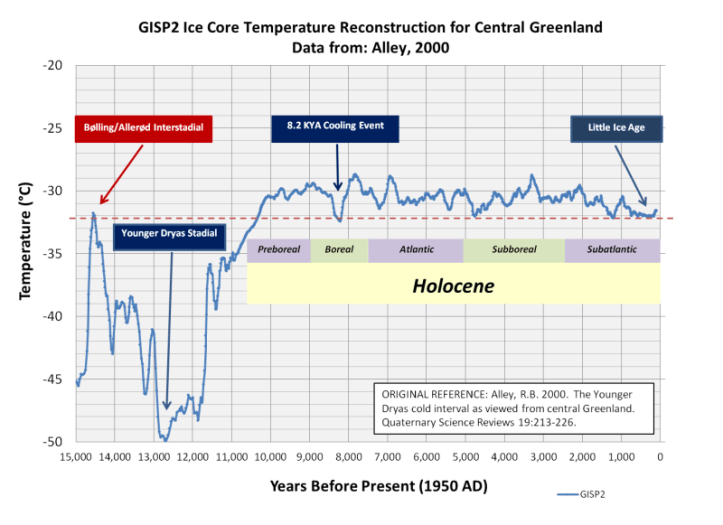
Guest “whatever” by David Middleton
Texas cave sediment upends meteorite explanation for global cooling
7 hours ago
Baylor UniversityTexas researchers from the University of Houston, Baylor University and Texas A&M University have discovered evidence for why the earth cooled dramatically 13,000 years ago, dropping temperatures by about 3 degrees Centigrade.
The evidence is buried in a Central Texas cave, where horizons of sediment have preserved unique geochemical signatures from ancient volcanic eruptions—signatures previously mistaken for extraterrestrial impacts, researchers say.
The resolution to this case of mistaken identity recently was reported in the journal Science Advances.
“This work shows that the geochemical signature associated with the cooling event is not unique but occurred four times between 9,000 and 15,000 years ago,” said Alan Brandon, Ph.D., professor of geosciences at University of Houston. “Thus, the trigger for this cooling event didn’t come from space. Prior geochemical evidence for a large meteor exploding in the atmosphere instead reflects a period of major volcanic eruptions.
[…]
One unnecessary hypothesis upends another… So what? In terms of Late Pleistocene Greenland stadials, the Younger Dryas isn’t even particularly anomalous. The real anomaly, to the extent there is one, is the preceding Bølling–Allerød interstadial.

The Bølling–Allerød interstadial featured a sharp rise in atmospheric carbon dioxide (possibly >400 ppm according to at least one plant stomata study) and Central Greenland temperatures as warm as the Little Ice Age.
While impact events and/or volcanic eruptions certainly could have played a role in Late Pleistocene to Early Holocene extinctions and may have even had transient effects on Younger Dryas climate change, the Dansgaard–Oeschger Events occurred with clock-like regularity during the final Pleistocene glacial stage. These episodes of rapid warming to nearly interglacial conditions occurred approximately every 3,000 years from 90 ka to 12 ka, indicating a periodic drive mechanism.

No one really knows what drove the Dansgaard–Oeschger and Heinrich cycles… But neither impact events nor volcanic eruptions can explain such a clearly quasi-periodic climate change signal.
Like this:
Like Loading…
Related
via Watts Up With That?
August 1, 2020 at 12:07PM

